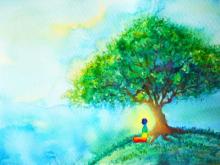The Calcium & Protein Relationship: What You Need To Know
The importance of calcium in our bodies cannot be stressed enough. Calcium, along with vitamin D, is what builds and strengthens our bones and basically keeps them knitted together. A deficiency in calcium can lead to smaller, less noticeable symptoms like achy joints, tingling in the arms or legs, brittle nails, insomnia or muscle cramps. A further depleted calcium intake can result in far more severe symptoms such as heart palpitations, hypertension, increased risk of fractures and even osteoporosis.










